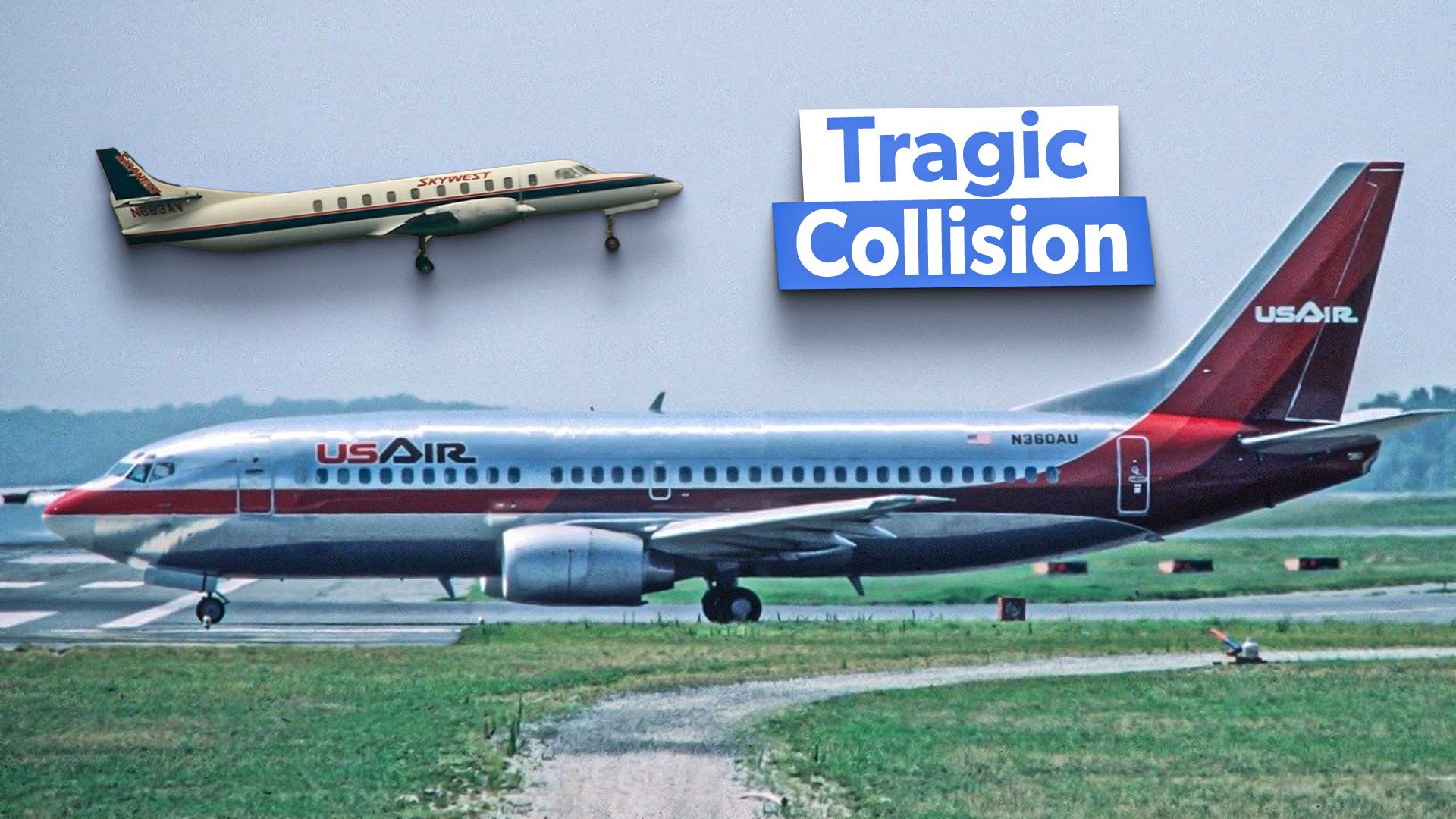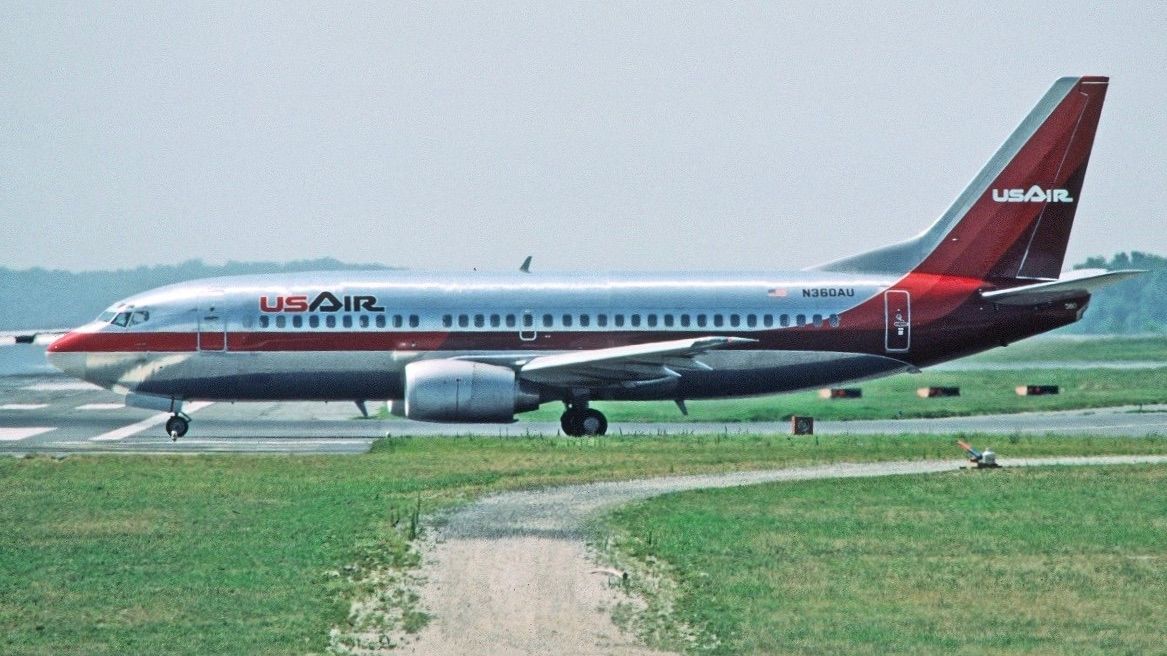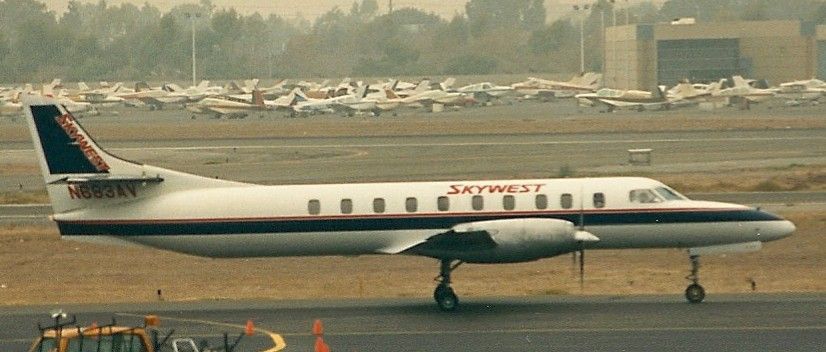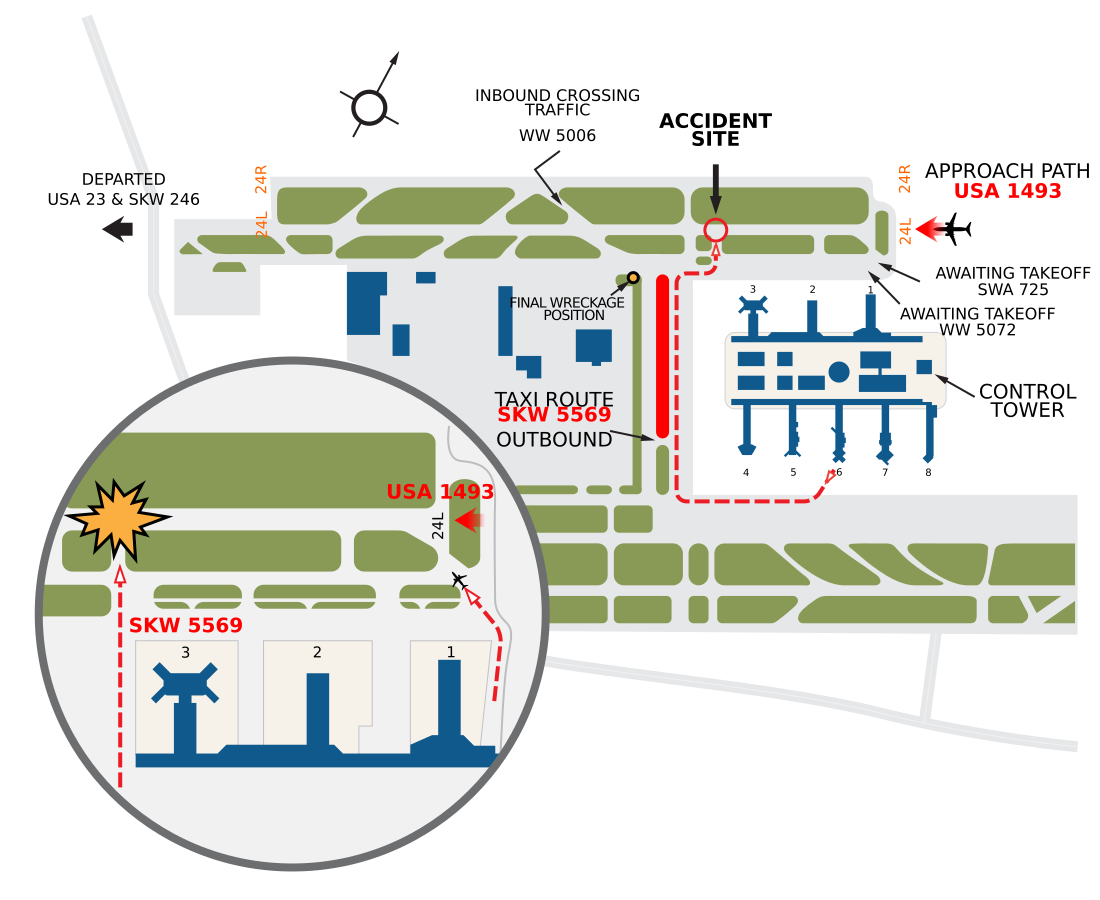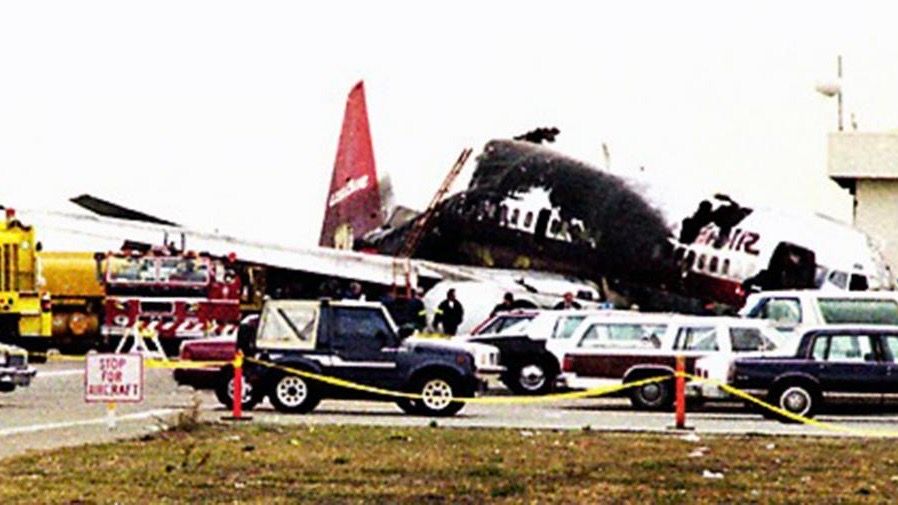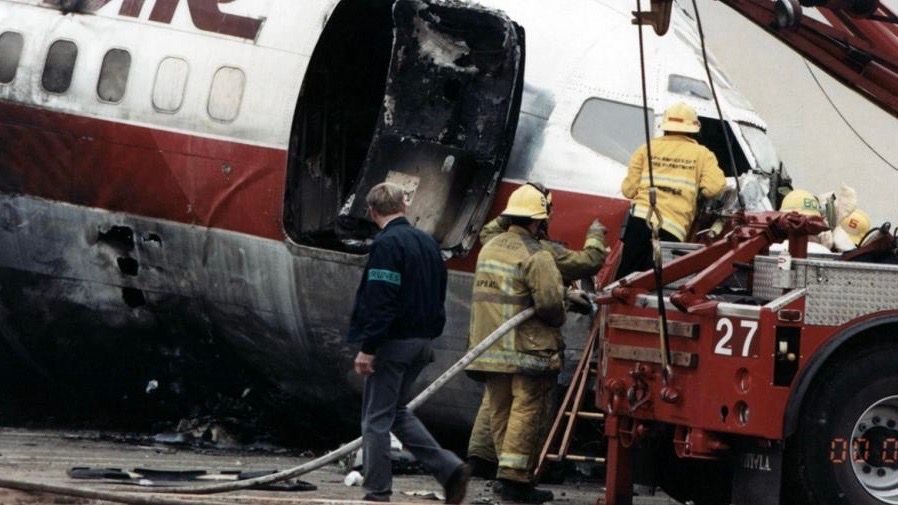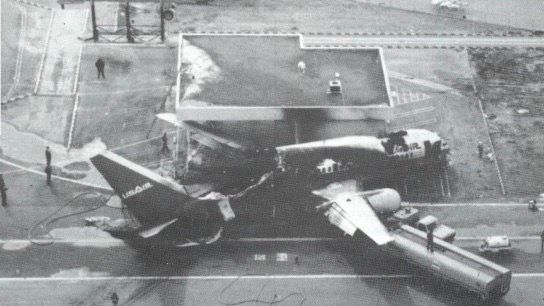It was February 1st, 1991. USAir flight 1493 was on its final approach to Los Angeles International Airport (LAX). The flight had been smooth and uneventful and now the sun was setting. The Boeing 737-300 had 83 passengers and 6 crew onboard. The aircraft had started out that day from Syracuse, New York. There was a crew change in Washington DC, then they flew on to Columbus, Ohio. After Los Angeles, the flight was due to end in San Francisco.
The crew
The captain that day was Colin Shaw and the first officer (pilot flying) was David Kelly. Working in the cabin were Deanna Bethea, the senior flight attendant, and her crew, Vance Spurgeon, Patricia Hodges and Bill Ibarra. Deanna was seated at L1, Bill at R1, Patricia at L2 and Vance at R2. Deanna was working in the first-class cabin.
On the ground
A Fairchild Metroliner was bound for Palmdale, California. It was the last leg of a multi-scheduled day. There were two flight crew and ten passengers onboard SkyWest 5569. The Metroliner was cleared to taxi from gate 32 to runway 24L via taxiways Kilo, 48, Tango and 45 by the controller. SkyWest 5569 was briefly not visible to the tower, on taxi way 48 between Kilo and Tango.
A Wings West aircraft had landed on 24R and was waiting for permission to cross to 24L, but the controller was having issues contacting them, which distracted her. The SkyWest Metroliner was cleared by the controller to taxi and hold on 24L at the intersection. After four attempts, the controller managed to contact Wings West 5006 who had changed the radio frequency. The flight progress trip had not been passed to her by her colleague for that flight.
The controller then also cleared USAir 1493 to land. Another Wings West aircraft, flight 5702, another Metroliner, was also waiting for take-off and the controller believed that this was the SkyWest aircraft. She checked the position of flight 5702, who said they were holding short of the runway. She was also dealing with other flights and had no idea that SkyWest 5589 was still at the intersection.
What happened next?
The flight crew of USAir could not see the aircraft. Just as they touched down at 18:06 and the nose gear lowered, there was a sickening crunch and sound of scraping metal. The first officer, who was flying, applied maximum brakes, but it was too late. The Metroliner was completely crushed. It happened so quickly, that no one on board would have known what happened. The small turboprop was mangled and twisted beyond recognition.
There was a mass of sparks on the left side of the Boeing 737 and then a ball of fire. Passengers were starting to get hysterical and scream. The flight attendants shouted their commands “Heads down, stay down!” over and over, waiting for the aircraft to stop. It didn’t. The aircraft slid to the right and then the left. Bill could feel that the cabin was getting hotter and the cabin floor was moving upwards towards him. Smoke was starting to enter the cabin.
Fuel from the Metroliner and a fractured oxygen system fueled the fire. The windows started to melt. There was a fire outside on the left side.
” The floor was heaving and smoke burst right through, right in front of my jumpseat. I can see every passenger that can possibly have a view of me, staring at me, looking for an answer.”
Bill, flight attendant as told to National Geographic
Both Vance and Patricia released their seatbelts and tried to figure out what was going on. Patricia opened her L2 door but there was a fire outside, so she closed it. Suddenly, they were both thrown forward into the galley bulkhead as the aircraft impacted an empty fire station. There was an explosion and the aircraft was full of thick black smoke. The cabin was in darkness and the emergency lights came on, but with the pitch-black smoke, it was impossible to see anything.
Evacuating in darkness
The interphone stopped working, so the flight attendants were shouting ‘Evacuate-Evacuate!’ and “Don’t panic, stay low!” None of the left side doors could be used because of the intense fire, although two passengers did climb out of the left overwing exit onto the wing, before sliding to the ground. Bill managed to open door R1 and was struggling to breathe. The slide pack did not deploy. It had broken free from the girt bar and fallen into a hole where the cabin floor had burned.
A passenger was standing next to him, so Bill pushed him out onto the tarmac, as there was no other choice. The door would not open fully. He pushed another two passengers out. He tried to go back into the cabin but was beaten back by the choking black smoke and intense heat of the fire. He jumped out of R1. Vance opened door R2 and the slide deployed, so he started to evacuate and redirect passengers.
Bottleneck at overwing exits
For those seated at the front of the aircraft there was little option but to go to the right overwing exit or out of R2, but a bottleneck had been created by panicking passengers. Some people just froze in their seats. It took some time to open the overwing exit (although Bill had briefed them) and two men were fighting in the cabin, blocking the exit. Seatbacks were also partially blocking exits.
Patricia tried to get to the overwing to help but could not because of the tide of passengers against her. She could not get beyond row 20, so she redirected passengers to the rear exit. You could not see anyone or anything at that point. Passengers were crawling over one another trying to get out. Vance had evacuated as many as he could and jumped down the slide as fire was melting it.
Patricia was about to lose consciousness, so jumped from the aircraft. Firefighters were quickly at the scene to tackle the raging fire and also saw the first officer trying to get out the cockpit window. They pulled him free of the aircraft.
“A flight attendant had a deep cut on his head and was in such deep shock, that he was incoherent. He kept insisting that he had to go back to the plane to ‘help those others’. I tried to get him to lie down. The flight attendants were marvelous – one was crying but still doing her job, giving instructions to passengers and trying to keep them calm.”
Passenger, flight 1493 as told to People magazine.
The aftermath
Passengers walked away from the aircraft like dazed zombies, some silent, some shaking and sobbing. A few injured passengers lay motionless on the ground. Vance led passengers away from the aircraft. Buses were sent to collect them and airport staff brought blankets. A triage center was set up. Survivors were then kept in a lounge temporarily and then sent to the hospital.
- SkyWest 5569: two crew and ten passengers died.
- USAir 1493: 23 passenger fatalities and two crew members died.
The occupants of SkyWest 5569 died of blunt force trauma. The captain of USAir 1493 had blunt force trauma to the head, where the bulkhead had collapsed onto him. Senior flight attendant Deanna and the remaining passengers died of asphyxiation and burns. Twenty-nine passengers and crew were injured, ten passengers and two crew were seriously injured.
“I became quite emotional. In particular, discussing the people who were killed near me, was most upsetting. The flight attendant who served me in first class was found dead in the aisle, next to the window exit.”
Survivor, USAir 1493 as recorded by Flight Safety Foundation.
The National Transportation Safety Board (NTSB) report found that the probable cause of the accident was the procedures in use at the LAX control tower, which provided inadequate redundancy, leading to a loss of situational awareness by the local controller, and inadequate oversight by the Federal Aviation Administration (FAA) for failing to supervise the control tower managers.
The crash led directly to the NTSB’s recommendation of using different runways for takeoffs and landings at LAX. There were also issues with visibility from the tower, the ground radar not working, aircraft lights blending with airport lights and glare on the tower windows.
” I remember just feeling a lot of sorrow… that two of my crew members died and so many passengers died.”
Vance, flight attendant, as told to National Geographic.

